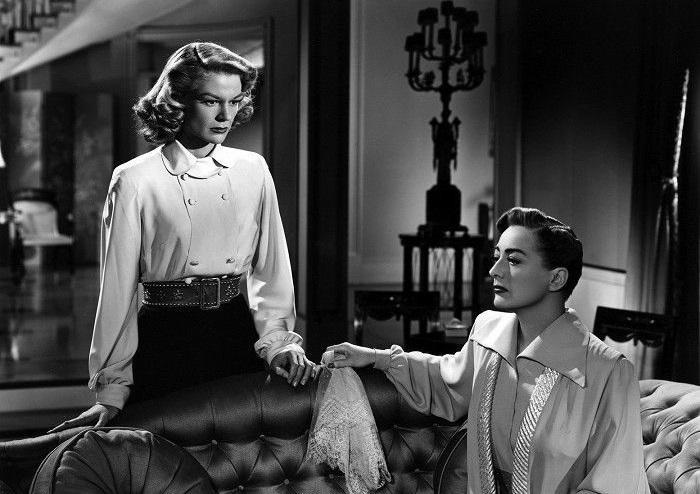I was going to cover the launch of the Criterion Channel this week, but then I realized I hadn’t yet written about one of the hidden classics buried in Amazon Prime’s back catalogue. Prime has an odd array of classic films, many of them public domain titles that deserve better restorations but not be available, or collected, elsewhere. Dig a little and you can find some great films, like 1950’s Harriet Craig, a fascinating character study about Joan Crawford torturing her family.

Crawford is Harriet, a woman who obsessively controls her home, her relationships, and especially her husband Walter (Wendell Corey). After Harriet leaves for a few days to visit her mother in a sanitarium, she returns home to find that Walter has “let loose” for a bit, having friends over and leaving the living room a mess. This prompts a spiral as Harriet tightens her grip on the household and on her husband’s life, even to the point of interfering with his job prospects, dictating who his friends are, and controlling every aspect of their home. As the film proceeds, however, the underlying reasons for her neuroses are revealed, complicating the audience’s reaction to her and her husband’s dawning realization that his wife is not as perfect as she at first seemed.
Unsurprisingly, Harriet Craig is Crawford’s film, and she mines every aspect of the character to create someone at once terrible and pathetic. Harriet’s obsessive control over her environment stems from a number of sources, and while the film asks the audience to sympathize with her, it also doesn’t turn her into a tragic figure to be pitied. The hurt is too deep and too intrinsic to her personality to be easily pigeon-holed or altered, and it is this that makes her character so interesting to watch, even if what she does is unforgivable. Crawford gives several impassioned speeches that clarify Harriet’s neuroses not just as an individual woman, but as part of the wider systemic subjugation of women. Seeing the suffering of her mother and remembering her father’s behavior, Harriet clings to the home as a way of calming the world around her, controlling things in the one sphere where she can permissibly exercise any degree of control at all. While the film does come down on the side of home and hearth (this is 1950, after all), it also gives voice to Harriet’s complaints about a woman’s financial and emotional dependence on a man in a culture where a woman would often move from her parents’ home to her husband’s with little prospects of her own if she loses him.
Some of this sympathy stems from the approach to the script itself, co-written by Anne Froelick, who would end her career after being blacklisted by HUAC for her communist sympathies. Harriet Craig is also a remake—or re-adaptation—of the play Craig’s Wife, with an earlier version directed by Dorothy Arzner and starring Rosalind Russell (available on YouTube). The focus on the woman in the story, the terror she inspires in her servants and her husband’s friends while her husband remains oblivious, still prizes her narrative above others, at times moving into a character study rather than a basic melodrama and evading some of the superficial or moralistic aspects of similar films.
Harriet Craig is an absorbing drama, a curiously sympathetic portrait of a woman who could easily have been an unrepentant villain, and a fantastic vehicle for Crawford. Rather than reinforce gendered stereotypes, the film, the script, and Crawford take the time to discover what is really driving Harriet, and why the viewer shouldn’t be so quick to condemn her. It’s a deft little film, and one worth seeking out.
Harriet Craig is available to stream on Amazon Prime.


Sharon Humphries-Brooks
It sounds like an intriguing fascinating woman, Lauren. (it even reminds of someone!)
DameStruck: Craig’s Wife (1936) – Citizen Dame
[…] cinematic adaptation of the 1925 play of the same name (the third would be Harriet Craig, which I reviewed earlier in this column). Craig’s Wife might look like a typical “women’s picture,” adapted by a female […]